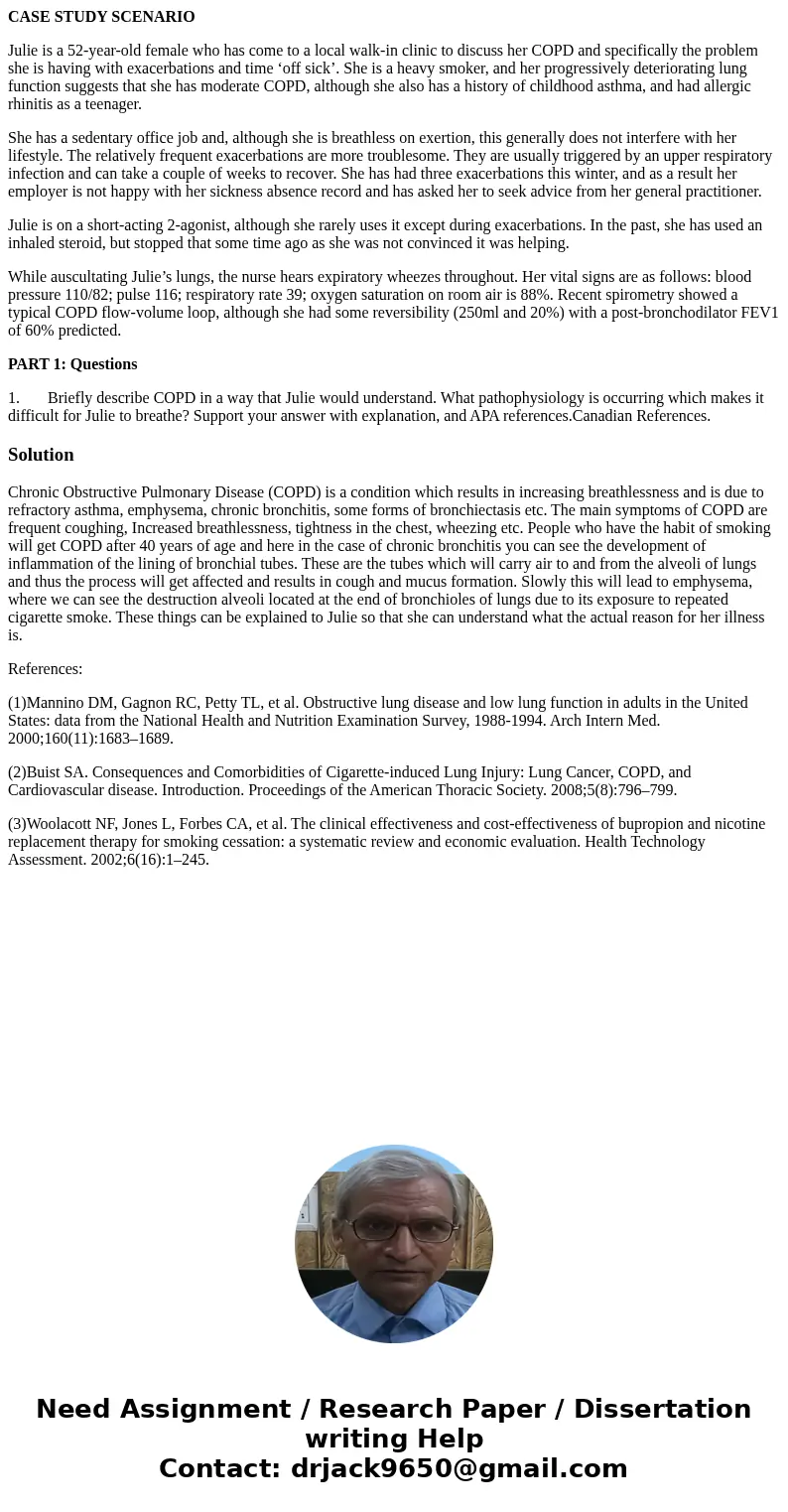CASE STUDY SCENARIO Julie is a 52yearold female who has come
CASE STUDY SCENARIO
Julie is a 52-year-old female who has come to a local walk-in clinic to discuss her COPD and specifically the problem she is having with exacerbations and time ‘off sick’. She is a heavy smoker, and her progressively deteriorating lung function suggests that she has moderate COPD, although she also has a history of childhood asthma, and had allergic rhinitis as a teenager.
She has a sedentary office job and, although she is breathless on exertion, this generally does not interfere with her lifestyle. The relatively frequent exacerbations are more troublesome. They are usually triggered by an upper respiratory infection and can take a couple of weeks to recover. She has had three exacerbations this winter, and as a result her employer is not happy with her sickness absence record and has asked her to seek advice from her general practitioner.
Julie is on a short-acting 2-agonist, although she rarely uses it except during exacerbations. In the past, she has used an inhaled steroid, but stopped that some time ago as she was not convinced it was helping.
While auscultating Julie’s lungs, the nurse hears expiratory wheezes throughout. Her vital signs are as follows: blood pressure 110/82; pulse 116; respiratory rate 39; oxygen saturation on room air is 88%. Recent spirometry showed a typical COPD flow-volume loop, although she had some reversibility (250ml and 20%) with a post-bronchodilator FEV1 of 60% predicted.
PART 1: Questions
1. Briefly describe COPD in a way that Julie would understand. What pathophysiology is occurring which makes it difficult for Julie to breathe? Support your answer with explanation, and APA references.Canadian References.
Solution
Chronic Obstructive Pulmonary Disease (COPD) is a condition which results in increasing breathlessness and is due to refractory asthma, emphysema, chronic bronchitis, some forms of bronchiectasis etc. The main symptoms of COPD are frequent coughing, Increased breathlessness, tightness in the chest, wheezing etc. People who have the habit of smoking will get COPD after 40 years of age and here in the case of chronic bronchitis you can see the development of inflammation of the lining of bronchial tubes. These are the tubes which will carry air to and from the alveoli of lungs and thus the process will get affected and results in cough and mucus formation. Slowly this will lead to emphysema, where we can see the destruction alveoli located at the end of bronchioles of lungs due to its exposure to repeated cigarette smoke. These things can be explained to Julie so that she can understand what the actual reason for her illness is.
References:
(1)Mannino DM, Gagnon RC, Petty TL, et al. Obstructive lung disease and low lung function in adults in the United States: data from the National Health and Nutrition Examination Survey, 1988-1994. Arch Intern Med. 2000;160(11):1683–1689.
(2)Buist SA. Consequences and Comorbidities of Cigarette-induced Lung Injury: Lung Cancer, COPD, and Cardiovascular disease. Introduction. Proceedings of the American Thoracic Society. 2008;5(8):796–799.
(3)Woolacott NF, Jones L, Forbes CA, et al. The clinical effectiveness and cost-effectiveness of bupropion and nicotine replacement therapy for smoking cessation: a systematic review and economic evaluation. Health Technology Assessment. 2002;6(16):1–245.

 Homework Sourse
Homework Sourse